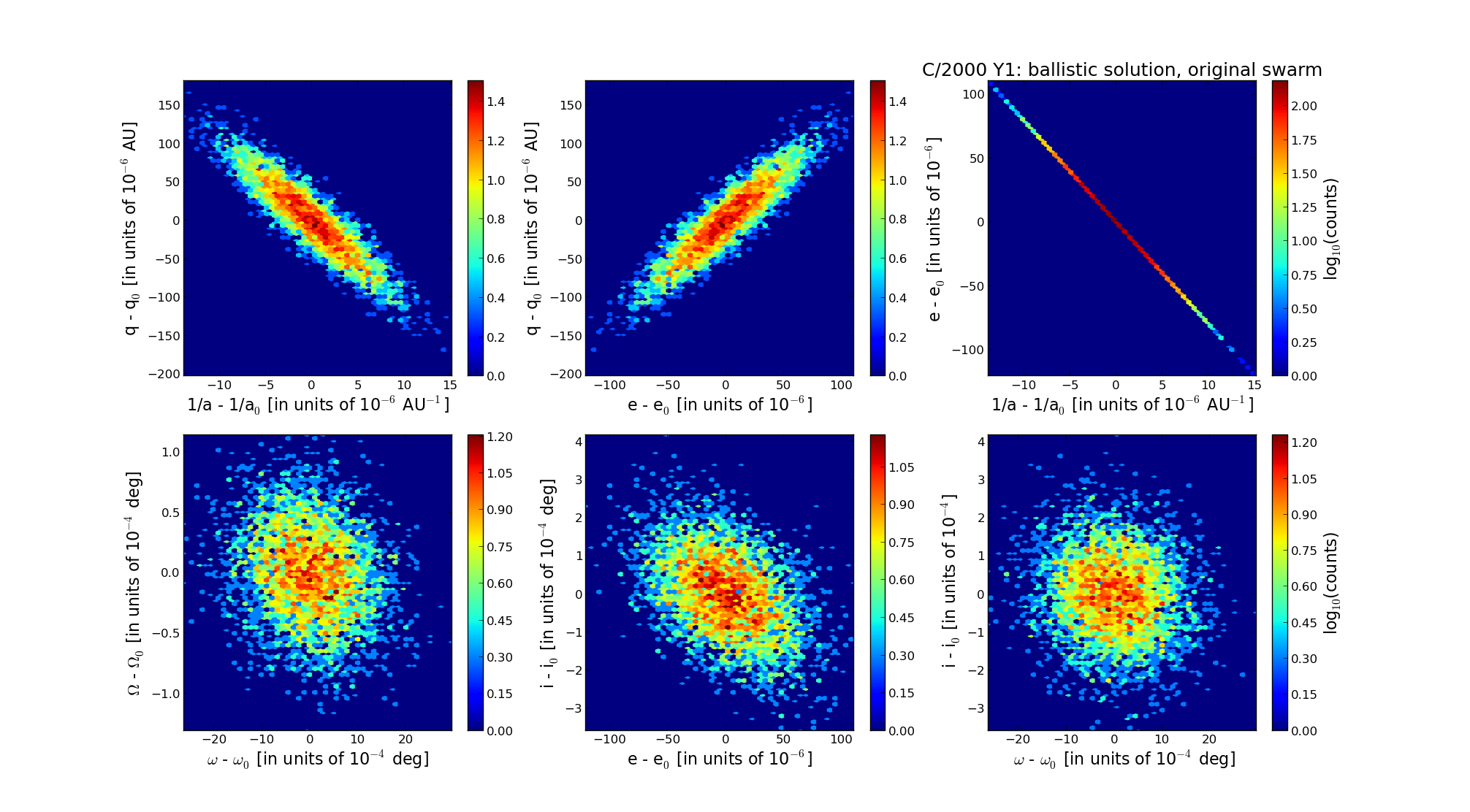| Solar System Dynamics & Planetology Group |
 |
C/2000 Y1 Tubbiolo |  |
| Solar System Dynamics & Planetology Group |
 |
C/2000 Y1 Tubbiolo |  |
| number of observations | 94 |
| number of residuals | 185 |
| data interval | 2000 Oct. 24 — 2002 Nov. 5 |
| rms [arcsec] | 0.74 |
| orbit quality class | 1a |
| Epoch (TT) | 20010401.0 | = JD 2452000.5 |
| time of perihelion passage (TT) | 20010202.142668 | ± 0.012487 |
| perihelion distance | 7.97474088 | ± 0.00004697 |
| eccentricity | 1.00268899 | ± 0.00003350 |
| argument of perihelion [deg] | 181.731551 | ± 0.000767 |
| longitude of the ascending node [deg] | 239.395267 | ± 0.000036 |
| inclination [deg] | 137.976898 | ± 0.000104 |
| inverse semimajor axis [10-6 au-1] | -337.19 | ± 4.19 |

| Epoch (TT) | 16900210 | |
| time of perihelion passage (TT) | 20010203.415766 | ± 0.012454 |
| perihelion distance | 7.96805733 | ± 0.00004701 |
| eccentricity | 0.99951843 | ± 0.00003372 |
| argument of perihelion [deg] | 181.777248 | ± 0.000767 |
| longitude of the ascending node [deg] | 239.382014 | ± 0.000036 |
| inclination [deg] | 138.029678 | ± 0.000103 |
| inverse semimajor axis [10-6 au-1] | 60.44 | ± 4.23 |
| Epoch (TT) | 23110417 | |
| time of perihelion passage (TT) | 20010131.885868 | ± 0.012405 |
| perihelion distance | 7.96565179 | ± 0.00004716 |
| eccentricity | 0.99998723 | ± 0.00003373 |
| argument of perihelion [deg] | 181.639132 | ± 0.000763 |
| longitude of the ascending node [deg] | 239.409922 | ± 0.000036 |
| inclination [deg] | 137.998707 | ± 0.000103 |
| inverse semimajor axis [10-6 au-1] | 1.60 | ± 4.23 |